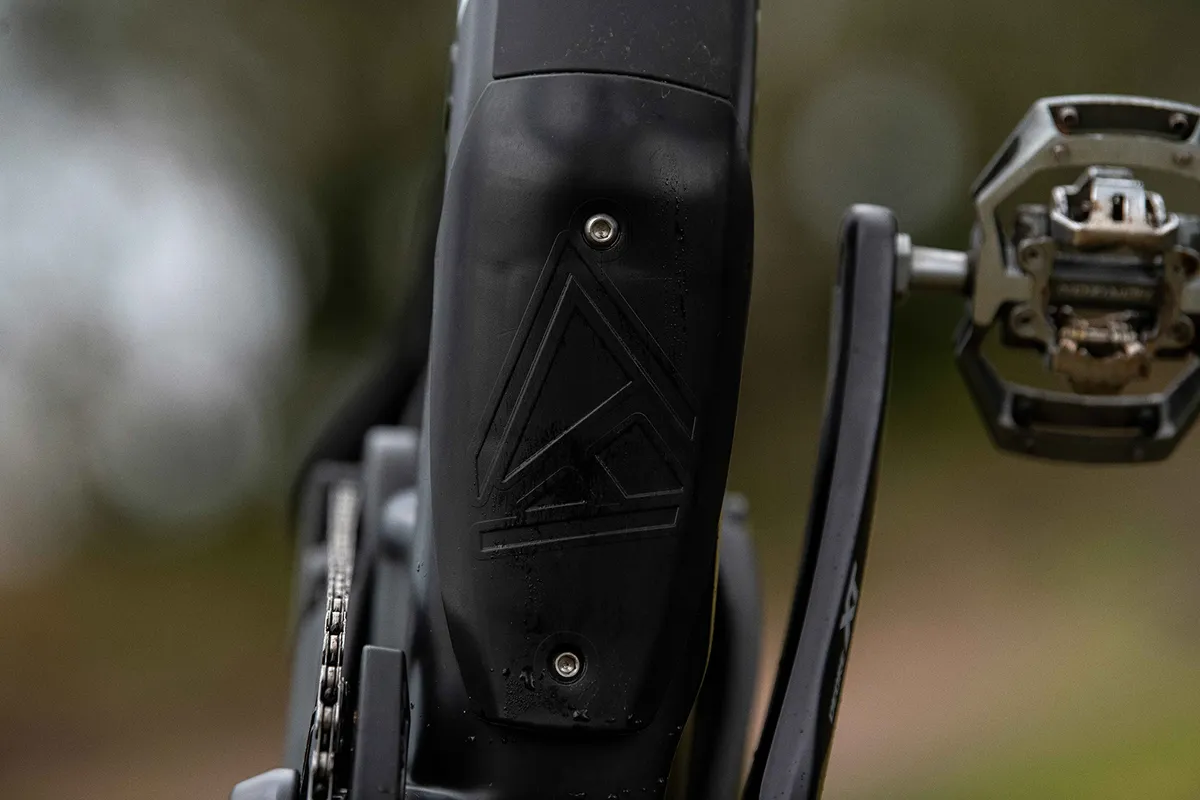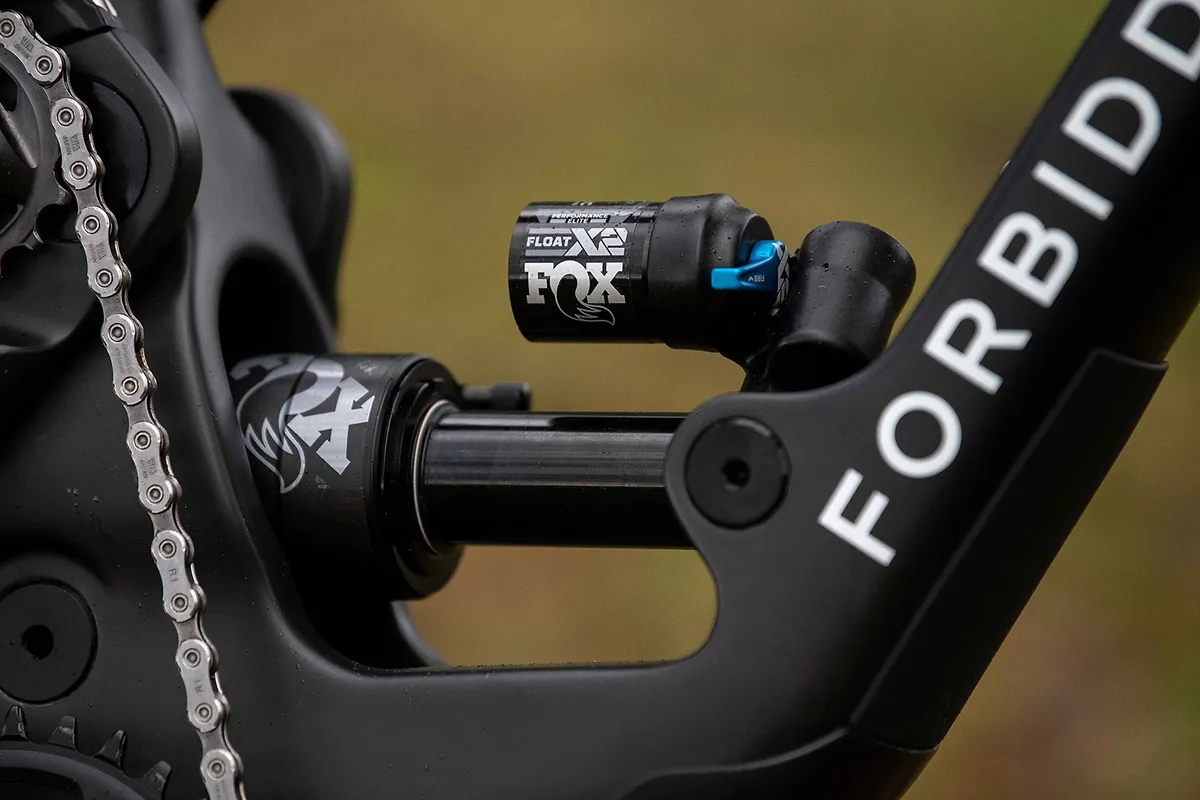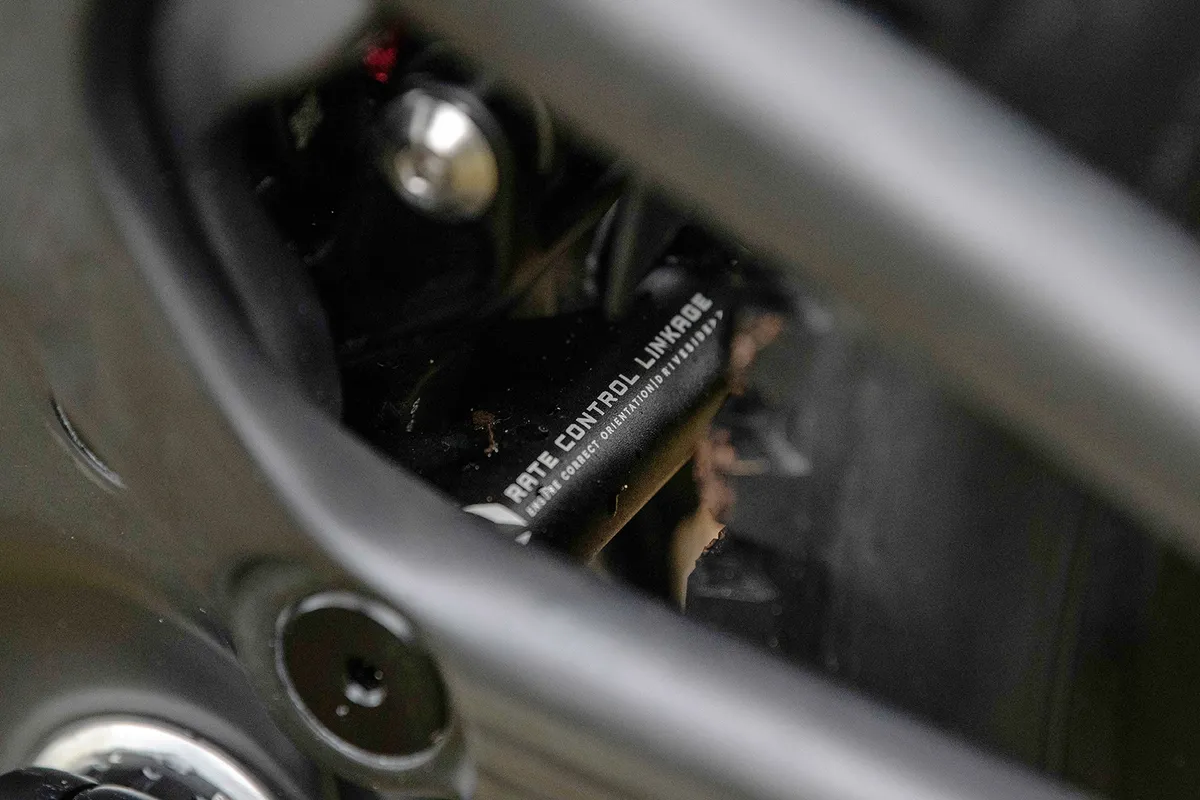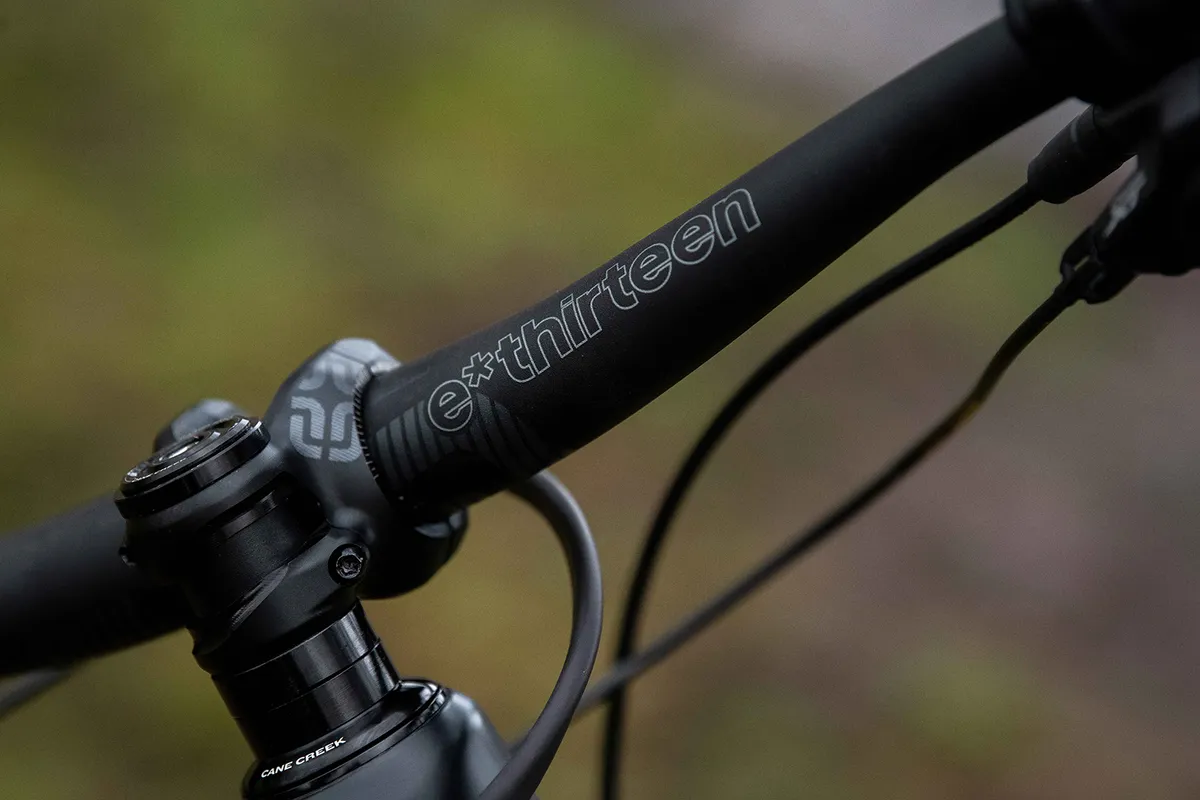Forbidden, the small brand from Vancouver Island, Canada, is one of the few companies that shook up the established order when it introduced its 130mm high-pivot trail bike, the Druid, in 2019.
Two years later, and still not ready to settle for the status quo, Forbidden is doing the same to the enduro/freeride market with this 154mm travel, high-pivot enduro sled.
So, will it tame the trails better than its longer travel, non-high-pivot rivals?
Forbidden Dreadnought XT frame and suspension details
High-pivot bikes aren’t uncommon these days, especially in the downhill world, but they’re certainly less common in enduro and trail disciplines.
The design characteristics have pros and cons, and if you want to examine them in detail, check out our Forbidden Druid first ride review, but here’s a quick overview…
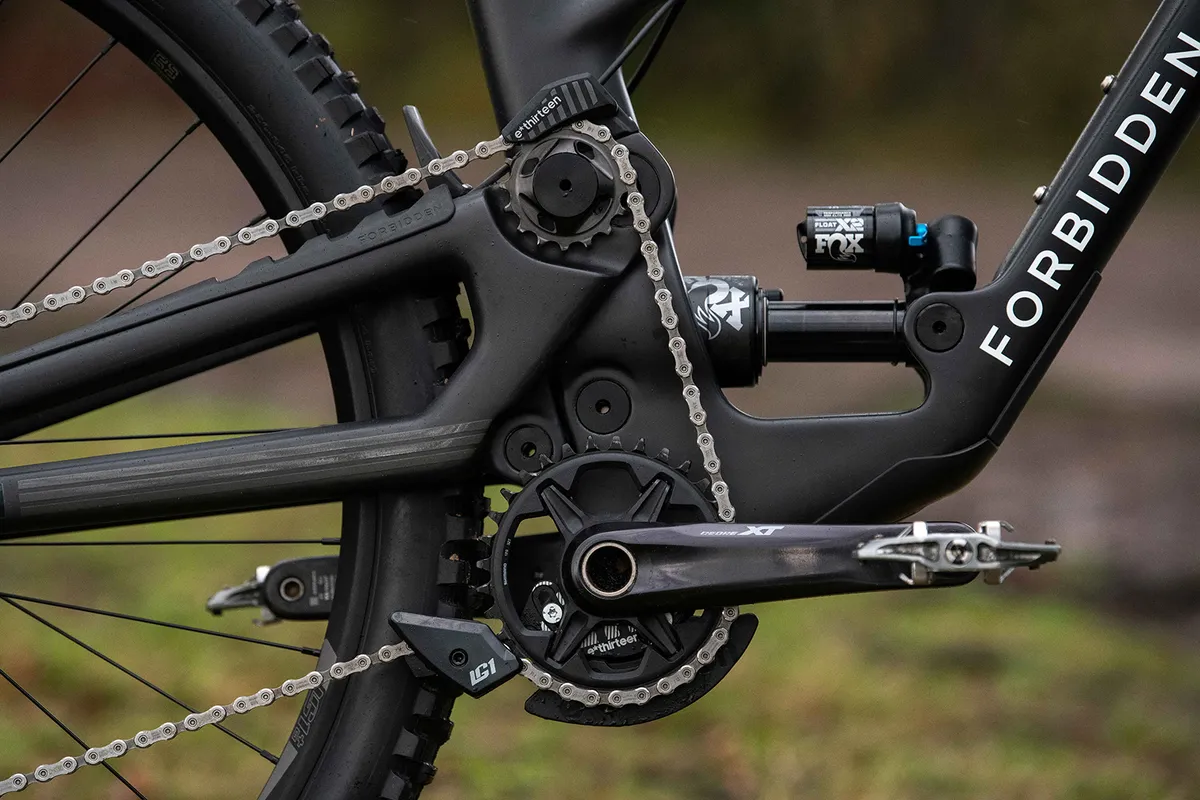
Rearward axle paths are the main reason for high-pivot designs. In theory, they allow the rear suspension to better absorb impacts due to the bump force and axle path running more parallel to each other; the rear wheel is able to move back and up out of the way of bumps.
The high pivot location also provides a stable pedalling platform, but only when the chain is run over an idler wheel near the pivot.
The idler wheel's location can be used to tune the anti-squat, limiting pedal bob and helping reduce pedal kickback created by the chain lengthening as the rear wheel travels backwards during suspension compression. Without this, the suspension’s performance can be negatively effected.
This design can have its drawbacks, including a longer chain, more drivetrain friction and potentially more maintenance.
The high pivot location can potentially cause the suspension to feel harsh under braking, too. This is thanks to increased amounts of anti-rise (where the suspension is forced to compress as the brakes are applied) compared to multi-link or low pivot bikes.
The Dreadnought has a fully rearward axle path where the rear-centre grows 30mm over its 154mm of travel, and about 16mm at its 35 per cent sag point, but it hasn’t been designed to be a ‘plough’ bike.
By offsetting the idler from the main pivot, Forbidden has been able to fine-tune the anti-squat to be around 115 per cent at sag, so the bike should have pretty decent pedalling characteristics. It claims to have achieved this with negligible pedal kickback, too.
The linkage-driven shock, controlled by Forbidden’s Rate Control Linkage, has also allowed it to tune the leverage curve. The leverage curve features a progressive ramp-up to the mid-stroke where it levels off and becomes more linear, then there is substantial ramp-up at the end of the travel making it harder to bottom out.
This linkage can be swapped out for Forbidden’s ‘Ziggy’ link and will mean you can run the Dreadnought as a mix-wheel setup: 650b on the rear, 29in up front.
Forbidden has paid close attention to making sure each frame size has a similar ride feel. As such, not only do they have size-specific geometry (see below), but Forbidden also made its bikes with size-specific tubing profiles.
I got the low down on this from Forbidden's CEO and the brains behind the bike, Owen Pemberton.
“You will see the biggest difference in the cross-sections of the down tube and the top tube. However, the whole front triangle structure is designed specifically for each size," he says.
"The laminate structure is also honed to give us the required characteristics we are looking for. The effect on stiffness/strength is that each front triangle better suits the average rider for that size of the bike than if we didn’t apply this effort. If you were just to lengthen each tube, keeping the cross-sectional structure and laminate design the same, then the larger frames would offer a more forgiving structure than the smaller, which is somewhat the opposite of what is needed.
"The size-specific design aims to equalise the strength and stiffness of each frame size. The end goal is seen by us as an extension of our underlying geometry concepts; to offer every rider the same ride experience.”

The Dreadnought has been tested to downhill standards to fit a dual-crown fork. The frame uses a threaded bottom-bracket (BB) shell, a rear 180mm post-mount brake mount and 148mm Boost hub spacing. As confusing a place as MTB standards go, it’s all pretty standard.
What isn’t standard is the chain length, and each size frame has a different chain length based on a 32t chainring and 51t cassette. These are: Small = 130 links; Medium = 132 links; Large = 134 links; Extra-Large = 136 links.
If you need to replace a chain, you’ll have to buy two to begin with. Use one full chain, typically 126 links, and then use the correct number of links from the second chain to get the right length.
Forbidden has also tried to keep the bike’s maintenance as simple as possible, and use very few proprietary parts.
There’s a water bottle mount inside the front triangle and tool storage mounts under the top tube, which houses neat cable routing. The cables are secured at entry and exit points to prevent any rattling.
There’s a small mudguard behind the seat tube to stop the worst slop from being splatted over the shock and decent chain protection runs along the swingarm, too.
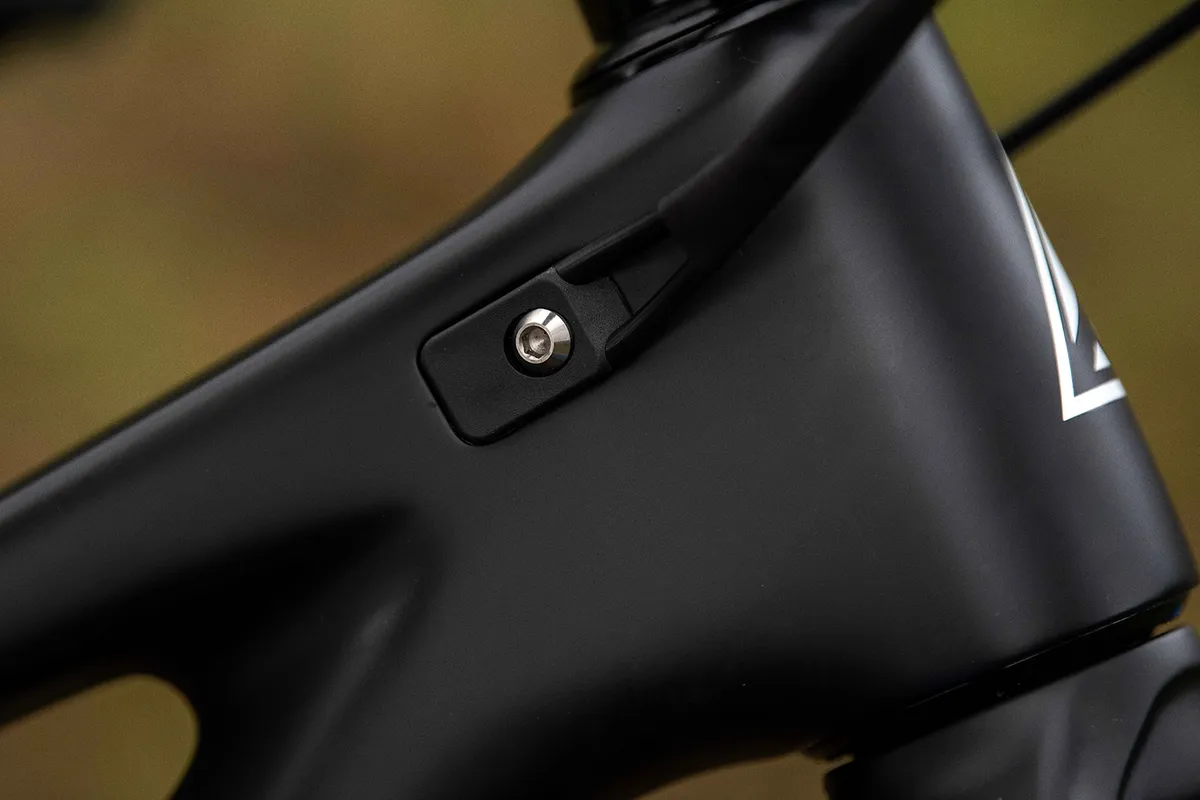
Underneath the down tube is a plastic cover that hides access to the dropper cable. Inside there’s enough space to stash some tools, a tube or spares.
Be aware, it’s not a quick-access solution and requires removing two 4mm bolts, most likely covered in mud, but it’s a useful space for storing trail essentials you may only need once in a while.
Forbidden Dreadnaught XT geometry
Forbidden built the Dreadnought around downhill-style geometry, with a slack 63.5-degree head-tube angle and long wheelbase numbers. But that’s the point of the bike, to provide a stable ride whether racing enduro, hitting park laps, shuttling, or riding all-day epics.
What’s interesting about Forbidden though, is that it has really thought about the riding position for taller riders. By increasing the rear centre lengths by 14mm for every frame size, while the reach numbers increase in 22mm steps, it hopes to keep a more consistent ride-feel across all size bikes.
In fact, the rear-centre: front-centre ratio is virtually identical across the four frame sizes from small to extra-large. It also increases the steepness of the seat-tube angles on larger models, ranging from 73 degrees on the small to 77.1 degrees on the extra-large, to maintain an identical 76-degree effective seat-tube angle across the size range. This should give the same rider position on every frame size.
| | S | M | L | XL |
|---|---|---|---|---|
| Seat angle (degrees) | 73 | 74.7 | 76.1 | 77.1 |
| Head angle (degrees) | 63.5 | 63.5 | 63.5 | 63.5 |
| Chainstay (cm) | 42.2 | 43.6 | 45 | 46.4 |
| Seat tube (cm) | 40 | 42 | 45 | 49 |
| Top tube (cm) | 59.3 | 61.7 | 64.1 | 66.5 |
| Bottom bracket height (cm) | 33.7 | 33.7 | 33.7 | 33.7 |
| Wheelbase (mm) | 1,203 | 1,244 | 1,284 | 1,325 |
| Standover (cm) | 72.1 | 72.1 | 72.7 | 73.3 |
| Stack (cm) | 61.2 | 62.1 | 63 | 63.9 |
| Reach (cm) | 44 | 46.2 | 48.4 | 50.6 |
The size XL does have a truck-like 464mm chainstay length, plus the additional 16mm chainstay growth as the rear suspension compresses to 35 per cent sag – that’s a whopping 480mm chainstay on the XL when sat on the bike.
I tested the size medium, with a 462mm reach and 436mm chainstays (which stretch out to 450mm at sag due to the rearward axle path), giving a long 1,244mm static wheelbase.
The Dreadnought has a 26mm bottom-bracket drop, which sits the BB pretty low without too much danger of pedal bashing your way through techy terrain.
These numbers fit the long, low, slack fashion, but the effective seat tube puts you in a position where you can pedal comfortably.
Forbidden Dreadnought XT specifications
The medium Dreadnought XT spec I tested, unsurprisingly, comes with a full Shimano XT drivetrain, running a 10-51t cassette, 32t chainring and 170mm cranks, as well as Shimano XT four-pot brakes with 203mm front and 180mm rear rotors.
Fortunately, there’s no downgrade in any parts, which can often be the case.
ethirteen kits out the cockpit with its Plus handlebar (800 x 20mm) and stem (40mm), while e.thirteen’s LG1+ EN rims are built on DT Swiss 350 hubs. These are then shod with a Maxxis Assegai 29 x 2.5 WT 3C MaxxTerra EXO+ tyre up front and a Maxxis Minion DHR II 29 x 2.4 WT 3C MaxxTerra DD tyre on the rear.
An SDG saddle and BikeYoke Revive dropper post with a Shimano lever finish off the build, all of which comes out at a respectable 15.14kg (33.4lb).
Forbidden Dreadnought pricing and availability
Two full build options are set to be released, and Olly Forster, Forbidden’s global marketing manager, told me to expect the Dreadnought XT model (tested here) in late spring and an SLX model sometime around autumn.
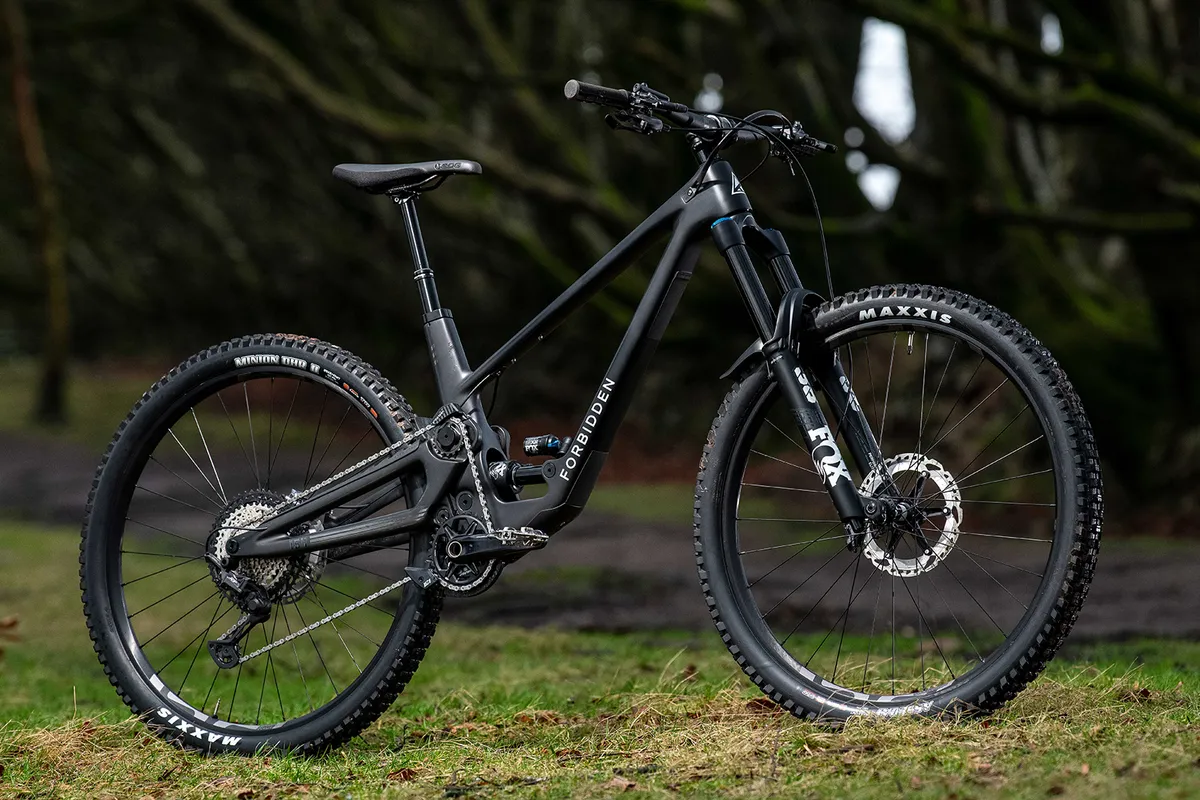
SLX build spec overview
- Fork: RockShox Zeb Select+ 170mm (6.7in)
- Shock: Fox Float X2 Performance
- Drivetrain: Shimano SLX
- Wheels: Shimano SLX hubs/ethirteen rims
- Tyres: Maxxis Assegai EXO+, Maxxis Minion DHR II DD
- Brakes: Shimano SLX
- Cockpit: ethirteen
- Seatpost: ethirteen Vario
- Price: £4,899 / $5,349 / €5,649
In early February, two frame-only options will be available. One option comes with a Push ElevenSix shock (£3,899 / $4,249 / €4,499), and the other an EXT Storia (£3,699 / $4,049 / €4,499).
A Fox Float X2 specced frame-only option should be available in late spring as well, along with the complete bikes.
Forbidden Dreadnought first ride impressions
I only had a couple of weeks with the Dreadnought in deep British winter conditions, but I still managed to get out for a couple of rides on some of the South West’s rougher trails, including Triscombe and the Forest of Dean.
Set up was relatively simple. I set the shock sag to the recommended 35 per cent and, after initial tests opted to fully open the shock's high- and low-speed compression to give the bike more sensitivity.
The size medium was ideal for my 173cm / 5ft 8in height.
Forbidden Dreadnought climbing performance
Climbing performance met expectations for the style of riding the Dreadnought is aimed at. Cycling the drivetrain by hand, there is noticeably more drivetrain drag than a standard setup, however, I never found this to be an issue on the climbs.
My ‘feelings’ are far from an accurate test, but pedalling this bike didn’t cause me to think there was any extra effort required.
Pedal bob was calm and I only reached for the shock’s lockout lever to see what difference it made. It’s not necessary to use it, but it helps firm up the rear-end and still provides plenty of traction.
The bike was pretty efficient too, when standing up on the pedals.

Don’t take it to be a trail whippet though, it’s still a lot of bike to pedal around, and climbing is more a means to an end than a KOM/QOM smasher, but it holds its own in the enduro/freeride category, and you won’t be struggling for grip from its supportive yet traction happy rear end.
The 76-degree effective seat-tube puts you in a comfortable climbing position. There are steeper angles out there, but I didn’t feel this was a hindrance to the bike, and I would be satisfied to pedal the Dreadnought all day, especially because it’s more ‘steady-wins-the-race’ than uphill thrasher.
Forbidden Dreadnought descending performance
On the descents, I was surprised by its lack of plushness. But with the bike's high anti-squat, Forbidden has made the Dreadnought relatively lively and playful on the trails, where you can manual, pump and jump pretty happily without the bike absorbing too much of your energy.
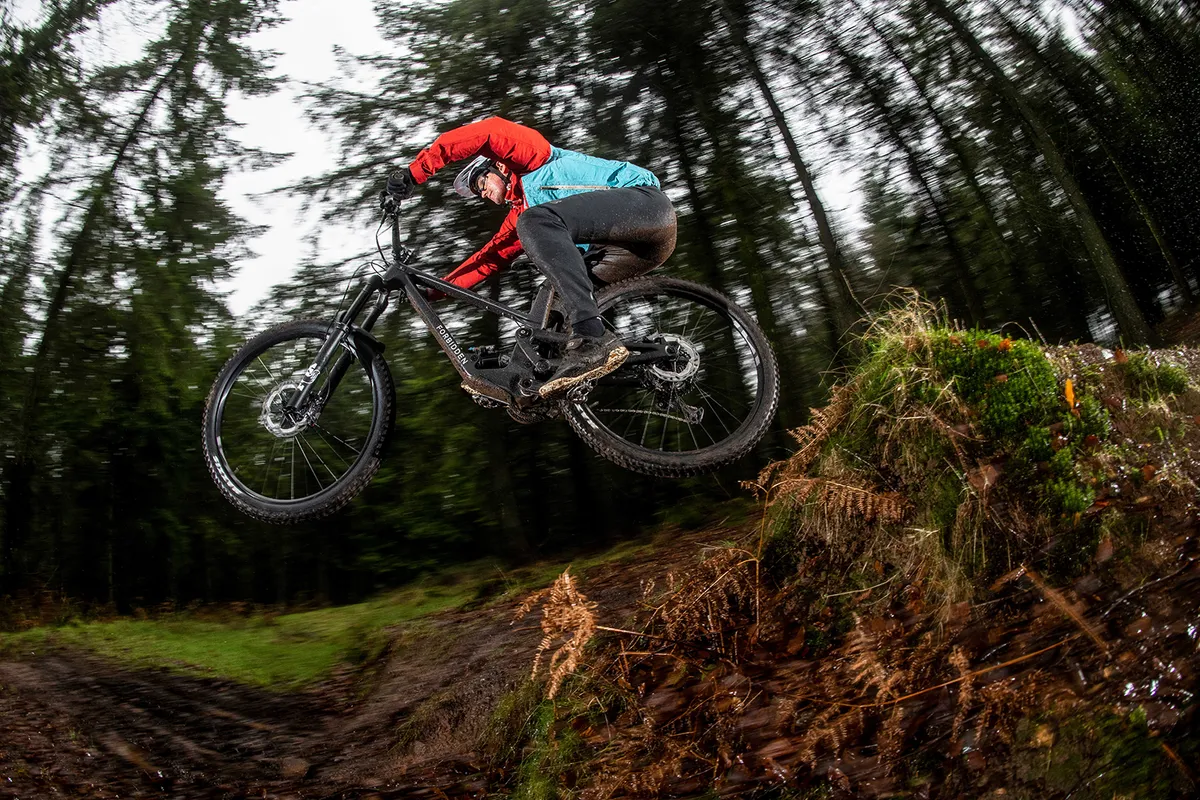
With the compression circuits fully open, the suspension was active in absorbing small chatter, but it doesn't give the smooth sensations you might expect from a high-pivot bike.
I found it used quite a lot of travel even on smoother trails, probably due to the linear mid-stroke, but I can’t say the bike felt wallowy, likely a result of its high anti-squat. Still, there was plenty of support late in the travel that prevented harsh bottom-outs, thanks to the strong ramp-up.
Don’t expect this 154mm-travel high-pivot enduro machine to feel like a 170/180mm enduro bike, though, even with the rearward axle path.

However, it handled a lot of abuse. Thanks to its geometry, it isn’t intimidated by anything on the trails, and even with its negligible pedal kickback, it still delivers feedback through the pedals.
When it comes to handling, this is where the extending rear-centre becomes more noticeable.
The Dreadnought definitely gives you a stable platform, especially compared to other enduro bikes I've tested recently with less rearward axle paths. You certainly notice that longer wheelbase when it sits into its travel.

It has less sharpness to its handling, but is by no means slow through the turns, and I felt it needed more rider input to lean it over in corners.
Its low bottom bracket and central position mean grip is impressive, but you need to get your braking correct to get the most from this bike’s corning abilities.
Dragging the brakes in turns seems to affect the Dreadnought more negatively than other bikes, perhaps because of the high anti-rise, but if you can get off the brakes and are active in your technique, this bike will reward you.
Forbidden Dreadnought early verdict
It’s not the steam roller you may think of when talking about a high-pivot enduro bike, but it is a very stable ride and has enough progression for the biggest hits.
It will get you back to the top of the trail with less fuss than any other big-hitting bikes too. You have to be pretty active with your technique and not drag the back brake in turns, but if you can manage this there’s a load of grip available.
Get it wrong, though, and it’s less forgiving than other bikes.
Product
| Brand | forbidden |
| Price | 6899.00 EUR,5999.00 GBP,6499.00 USD |
| Weight | 15.1400, KILOGRAM (M) - without pedals |
Features
| Fork | Fox 38 Performance Elite, 170mm (6.7in) travel |
| br_stem | e.thirteen Plus, 40mm |
| br_chain | Shimano XT |
| br_frame | Carbon fibre, 154mm (6.1in) travel |
| Tyres | Maxxis Assegai 3C Maxx Terra EXO+ TR 29x2.5in WT (f), Maxxis Minion DHR II 3C DD TR 29x2.4in WT (r) |
| br_brakes | Shimano XT four-pot, 200/180mm rotors |
| br_cranks | Shimano XT, 32t |
| br_saddle | SDG Radar Cro-Mo |
| br_wheels | e.thirteen LG1+ EN rims on DT Swiss 350 hubs |
| br_shifter | Shimano XT |
| br_cassette | Shimano XT, 10-51t |
| br_seatpost | BikeYoke Revive 160mm (dropper) |
| br_gripsTape | Forbidden |
| br_handlebar | e.thirteen Plus, 800mm |
| br_rearShock | Fox Float X2 Performance Elite |
| br_availableSizes | S, M, L, XL |
| br_rearDerailleur | Shimano XT with e.thirteen chain guide (1x12) |


